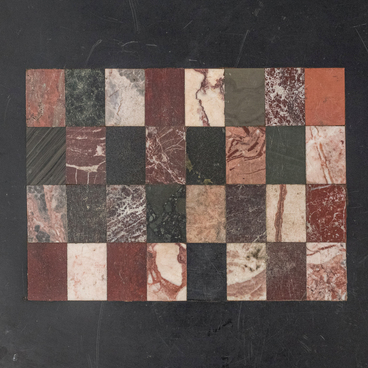In May 1844, the Grand Duke Konstantin Nikolaevich visited the Alexandrovsky arms factory in Petrozavodsk. After inspection, he wanted to purchase a collection of cannon models and technical drawings, made for the infantry as well as for both the Black Sea and Baltic fleets. In August of the same year, the factory released a collection of cannon models cast at the Olonets factories with drawings on copper boards — their size had been reduced to 1/8. At the same time, a similar request was received from the Naval Cadet Corps.
A little later, the Grand Duke decided to supplement his collection with models of those cast-iron cannons that had been made for the navy and fortress artillery earlier. This model of mortar cannon is based on the original cannon cast in 1835 at the Alexandrovsky factory.
A mortar was an artillery cannon with a short barrel for high-trajectory fire. Usually the weapon’s length was maximum 15 times the size of the caliber, that is, the diameter of the charge. The mortar was intended to destroy targets hidden behind walls or in trenches, as well as to destroy especially strong defensive structures. For the first time this weapon was used in the 15th century. The term “mortar” is still used nowadays. It is a short-barreled gun without a plate that transmits recoil into the ground. And in some languages, the words denoting an old cannon and a modern weapon are used synonymously.
The term “mortar” began to be used in Russia during the reign of Peter I, when artillery weapons were classified into long-barreled (cannons), medium-barreled (howitzers) and short-barreled (mortars). It was originally a hand-held weapon that fired from close by. Several centuries later, the mortar was used in horse artillery fire. Russian artillery used a 5-pound, 2-pound and 6-pound Coehorn, i.e. the so-called mortars developed Dutch military engineer Menno van Coehoorn. They were installed on a lightweight portable wooden machine and could be moved by two people, although it was more convenient if four people were involved.
This mortar was installed on a swivel, i.e. a device that allowed the barrel to rotate in two planes: both up and down and from left to right.
A little later, the Grand Duke decided to supplement his collection with models of those cast-iron cannons that had been made for the navy and fortress artillery earlier. This model of mortar cannon is based on the original cannon cast in 1835 at the Alexandrovsky factory.
A mortar was an artillery cannon with a short barrel for high-trajectory fire. Usually the weapon’s length was maximum 15 times the size of the caliber, that is, the diameter of the charge. The mortar was intended to destroy targets hidden behind walls or in trenches, as well as to destroy especially strong defensive structures. For the first time this weapon was used in the 15th century. The term “mortar” is still used nowadays. It is a short-barreled gun without a plate that transmits recoil into the ground. And in some languages, the words denoting an old cannon and a modern weapon are used synonymously.
The term “mortar” began to be used in Russia during the reign of Peter I, when artillery weapons were classified into long-barreled (cannons), medium-barreled (howitzers) and short-barreled (mortars). It was originally a hand-held weapon that fired from close by. Several centuries later, the mortar was used in horse artillery fire. Russian artillery used a 5-pound, 2-pound and 6-pound Coehorn, i.e. the so-called mortars developed Dutch military engineer Menno van Coehoorn. They were installed on a lightweight portable wooden machine and could be moved by two people, although it was more convenient if four people were involved.
This mortar was installed on a swivel, i.e. a device that allowed the barrel to rotate in two planes: both up and down and from left to right.



